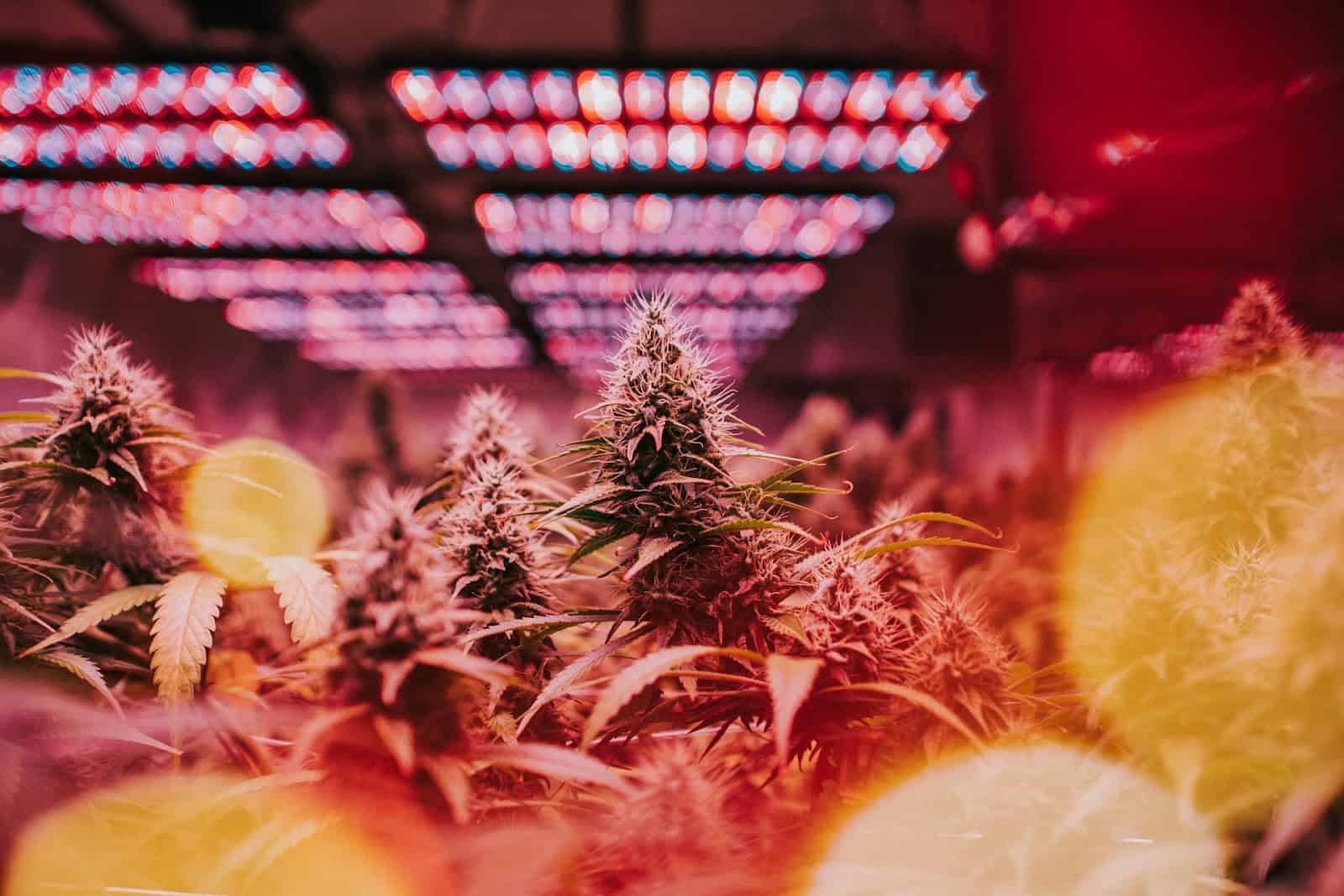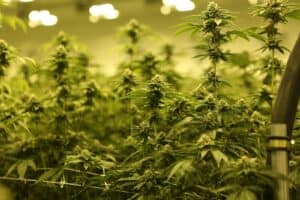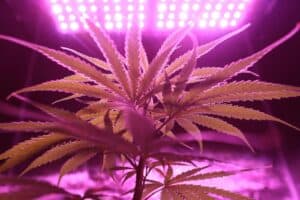Key Takeaways
- Male marijuana plants are essential for genetic diversity and strain development.
- Their deep roots and compostable material enrich soil health.
- Male plants produce softer fibers suitable for fine textiles like linens and clothing.
- Though less potent, cannabinoids in male plants can offer therapeutic benefits without a strong psychoactive effect.
- Their cultivation enhances the garden ecosystem.
Cannabis growers often overlook male marijuana plants during cannabis cultivation. However, male marijuana plants are equally important. This guide explores their uses, benefits, and frequently asked questions.
What Are Male Cannabis Plants?
These are marijuana plants that produce small round pollen sacs and they are mostly used for breeding.
Male vs Female Cannabis Plants: What is the Difference Between Male and Female Weed Plants?
Cannabis plants are dioecious, meaning they can be distinctly male or female. This differentiation becomes evident usually within one to three weeks of the transition into the flowering stage. Identifying the sex of the plant is vital, as it determines its role and potential use.
Characteristics of Male Plants:
- Pre-flowers: Small sacs at the nodes.
- Structure: Thicker stalks with fewer leaves.
- Male flowers look like bell-shaped clusters.
- Cannabinoid Levels: Lower concentrations of THC and CBD.
- Flavors and Aromas: Subtler compared to females.
Characteristics of Female Marijuana Plants:
- Pre-flowers: Pistils or “hairs.”
- Structure: Thinner stalks with more abundant leaves.
- Female flowers look like teardrop-shaped buds.
- Cannabinoid Levels: Higher concentrations, producing potent effects.
- Flavors and Aromas: Richer and more robust.
Hermaphrodite Cannabis Plants: Everything You Need to Know
A cannabis plant becomes a hermaphrodite (having both male and female reproductive organs) in response to stress. Once the plant senses its environment might not allow it to reproduce, it develops male pollen sacs alongside its female flowers to self-pollinate and ensure it can produce seeds.
Some common stressors that can cause this are:
- Inconsistent light cycles.
- Broken branches or pruning too aggressively.
- Some cannabis strains are more prone to becoming hermaphrodites due to their genetic makeup.
- Environmental factors like extreme heat, cold, or nutrient deficiencies.
To avoid this, growers aim to provide stable, optimal conditions and choose strains with strong, stable genetics.
Do you need to uproot hermaphrodite cannabis plants? Yes, you do to prevent accidental pollination of nearby cannabis plants. Also, their seeded buds are less valuable and less desired by cannabis growers.
What Are the Uses of Male Cannabis Plants?
Male plants have diverse applications that make them valuable in various contexts.
1. Breeding and Genetics Preservation
Male marijuana contributes half of the DNA required to create new cannabis strains, therefore allowing growers to preserve or enhance desirable traits.
2. Soil Enrichment
Their long taproots aerate the soil and help improve moisture retention and nutrient penetration. Additionally, their leaves and stalks can be mulched.
3. Hemp Fiber Production
Male marijuana plants produce softer, flexible, more durable, and finer fibers than females. These are used for textiles like linens, napkins, and clothing.
4. Cannabis Concentrates and Hash
Their leaves, stems, and pollen sacs can be used to produce hash and other concentrates. These extracts are milder but still beneficial for therapeutic purposes.
5. Edibles and Infusions
Male plants can be decarboxylated to create cannabutter or oils, which can be infused into food and beverages. Although less potent, these products offer subtle effects suitable for beginners.

6. Cannabis Juices and Teas
Juicing male cannabis plants delivers cannabinoids like CBD in their raw, non-psychoactive form. This method is ideal for health-conscious users seeking medicinal benefits without the high.
7. Seeds for Nutrition
Cannabis seeds, produced when male pollen fertilizes female plants, are rich in amino acids, fatty acids, and vitamins.
8. Pest Repellent
The terpenes in male plants, such as pinene and limonene, naturally repel pests. Planting males alongside other crops can protect the garden without using synthetic chemicals.
9. Companion Planting
Besides repelling pests, male plants act as plant companions in outdoor gardens by suppressing invasive weeds.
10. Root Utilization
Their roots contain phytochemicals, such as triterpenoids and alkaloids, with potential therapeutic applications[1]. However, further research is needed to explore their full benefits.
What Are the Benefits of Male Cannabis Plants?
Here are some benefits of male cannabis plants:
1. Genetic Diversity
Males contribute half the DNA in cannabis breeding. By selectively breeding male and female plants, growers can develop unique strains with tailored cannabinoid and terpene profiles.
2. Environmental Contributions
Beyond their genetic contributions, male plants improve the overall health of a garden. Their terpenes act as natural insect repellents, and their compostable materials enrich soil quality.
3. Versatile Applications
From fiber production to edible infusions, male plants offer a range of uses that extend beyond their traditional role in pollination. One of these includes medical usage. Some researchers are exploring their unique cannabinoids and terpenes for future medical applications, such as pain relief or anti-inflammatory properties.
Conclusion
Male cannabis plants are far from useless. Their contributions to breeding, agriculture, and even personal use make them an integral part of the cannabis life cycle. You can fully tap into their benefits as a grower or cannabis enthusiast.
Frequently Asked Questions
What are male weed plants?
These are cannabis plants that produce pollen sacs instead of buds and are primarily used for breeding to pollinate female plants and create seeds.
How can I differentiate between male and female cannabis plants?
Male cannabis has thicker stalks, fewer leaves, and small sacs in the pre-flowering stage. These sacs develop into pollen clusters as the plant matures.
Are male weed plants useful?
Yes, they are. They can be used to perpetuate the cannabis life cycle. They’re also used for soil enrichment, hemp fiber, hash and concentrates, edibles, and cannabis juice/tea. Additionally, their seeds and roots can also be utilized.
3. Are male plants psychoactive?
Since male marijuana has fewer cannabinoids than female marijuana, their effects are more therapeutic than psychoactive.
Can I use male plants for hash or concentrates?
Yes, you can. Their leaves, stems, and pollen sacs can be processed into hash or other cannabis concentrates.
Do male plants produce seeds?
They produce pollen, which fertilizes female plants to create seeds. They do not produce seeds themselves.
When do male plants release pollen?
Male plants typically release pollen four to five weeks into the flowering stage. This occurs when the sacs open, releasing the pollen into the air.
Can male plants improve my garden’s soil?
Yes, male plants’ taproots enhance soil structure and nutrient absorption. Their organic matter can also be composted.
Is it possible to juice male cannabis plants?
Yes, male plants can be juiced to extract cannabinoids in their raw form, offering health benefits without psychoactivity.
Can male plants be used in cooking?
Male plants can be decarboxylated and infused into oils or butter for use in edibles. These products are less potent but still effective.
Should I remove male plants from my garden?
It depends on your goals. If you want to prevent pollination and seed production, isolate or remove males. Otherwise, they can be used for their numerous benefits.
Reference
1. Recent research on cannabis sativa L.: Phytochemistry, new matrices, cultivation techniques, and recent updates on its brain-related effects (2018–2023) – PMC. (n.d.). PMC Home. https://pmc.ncbi.nlm.nih.gov/articles/PMC10146690/#sec6-molecules-28-03387








